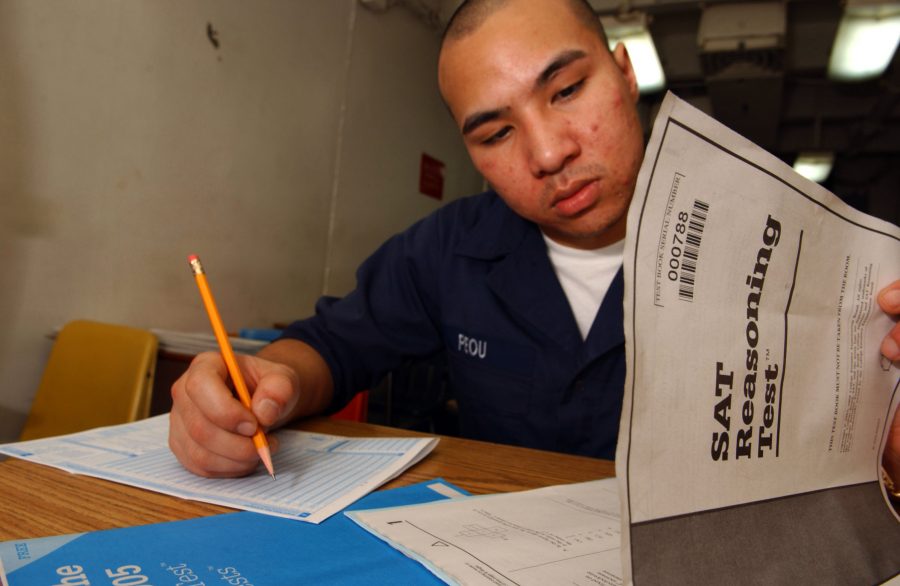Standardized tests become the standard
Academic environment increasingly values testing
December 2, 2016
In today’s academic environment, standardized tests can seem like a matter of life and death to students who wish to get accepted to their dream institution. This competitive mindset has made standardized testing a game of preparation and familiarity rather than that of knowledge.
Standardized tests continue to play a large role in the college admissions process. According to the Peterson’s Company, in February 2016, close to 78 percent of universities weighed standardized tests at considerable importance when looking at candidates for admission. In addition, as the admission process becomes tougher than ever before, the influence of standardized tests rises.
In order to score high and get accepted into these universities, many students will train themselves using test prep material such as books, specialized classes and tutors in order to gain a competitive edge.
“Students are reacting to the stress that everyone has placed on them,” physics teacher Dean Howarth said.
In McLean, many families have the financial ability to afford tutoring and test preparation classes, even with the average cost of tutoring exceeding $125 for a one-hour session in some areas.
“Students here can afford private tutors and classes,” assessment coach Sara Wheeler said.
Many students are also taking standardized tests multiple times in order to achieve higher scores. Both the College Board and the ACT organization note that test scores improve after a retake.
A poll of 87 students found that 67 of them had or have plans of taking the SAT or ACT more than once.
“I plan on taking the SAT until I achieve a perfect score,” sophomore Paige Osguthorpe said.
According to the poll, McLean students will take the ACT or SAT an average of two or three times. This is around the national average, according to an article published by College Confidential, which found that most students do not take the standardized tests more than three times.
Based on a poll of 100 students, 96 percent have taken or are planning on taking a standardized test. Two-thirds of these students plan on consulting test prep material.
This mentality toward standardized testing differs from what was common decades ago. According to Howarth, this competitive approach to standardized tests did not exist until the 80s. Tests were previously seen as a minor inconvenience that nobody really trained for, reflecting the mentality of the time that not everything was dependent on a grade.
“Nobody took classes, or took it five times or hired tutors—there was not that sort of mentality,” Howarth said. “Nowadays, it’s transcript above all else.”
In addition, SAT subject tests were far less relevant. Prior to 1994, they were known as achievement tests and served essentially the same role as AP tests—tests of achievement in a certain area rather than tests of college readiness.
Now, subject tests are a necessity for students wishing to get into highly selective universities such as Carnegie Mellon, Columbia, Dartmouth and the University of Pennsylvania, which all list subject tests as a requirement on their admissions sites.
Like subject tests, the ACT has also seen a recent increase in popularity. As a matter of fact, until recently it was nothing more than an afterthought for many students, who didn’t think it was necessary.
“I have no memory of an ACT,” history teacher Ian Howell said.
Regardless of the era, standardized tests are here to stay. However, the testing organizations are willing to adapt to meet the ever-changing needs of students as evidenced by the redesign of the SAT in March 2016.
As such, they will remain a part of the high school experience and of the college admissions process for years to come. As long as they are around, students will continue to take the utmost precautions in order to succeed on these exams, especially in McLean where expectations are high.
“It’s a game and you have to decide how you want to play it,” Howell said.












